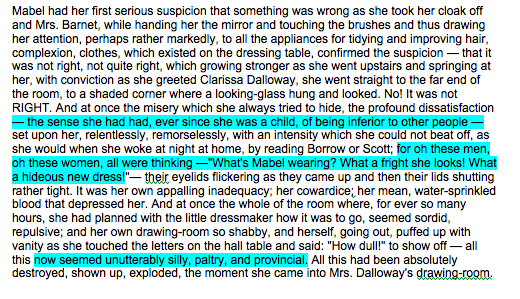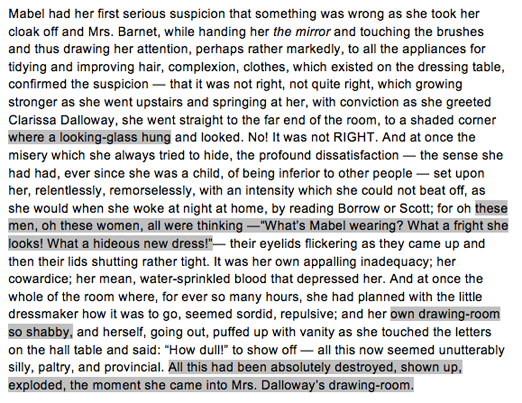Learn It
Careful readers can discover the theme of a literary text by looking at the events of the story, the words and actions of its characters, and the patterns of related images and ideas. As you make connections between all of these literary elements, the theme reveals itself. This “looking between the lines” and analyzing the text based on information gained from the text and background knowledge, will help you recognize the main theme of the text.
The supporting details in a literary text add to character, plot and theme development. Supporting details help address the "who, what, when, where, why and how" in a selection. These details may be harder to find in a literary text than in a nonfiction one, but the reward is worth it!
As you read the story, you may want to use some of the following hints to help you determine how specific and supporting details can help you see the bigger thematic picture:
- Keep track of specific details of objects, characters, actions and ideas on your own paper. A symbol can be an object, person or idea that can represent another idea through association.
- Look at the specific descriptions. Pay attention to items, places and people that are described with extensive detail. Look at their characteristics and try to draw connections between those characteristics and other things in the story or in life.
- Look for repetition of details. If the author repeats the object or idea in the literary text, then it probably holds some significance.
- Draw conclusions by looking at the details and making connections between the objects and the characters, and the characters and the plot. Utilizing the supporting details effectively can help you determine theme in a text. The supporting details can give you clues to help you determine theme.
Supporting Details in a Literary Text
Let's take a look at the details we find in “The New Dress," and draw some conclusions from the details provided to us by the author in the first paragraph of the story. This story is written in a style called "stream of consciousness," which lets us see Mabel’s thoughts and observations as she wears a new dress to a party at Mrs. Dalloway’s house.
Read the first paragraph of the story "The New Dress" by Virginia Woolf below. Look for details about the characters' actions, dialogue and thoughts; what happens; and possible symbols. Keep track of specific details the narrator uses to describe the circumstances she finds herself in; the descriptions she provides for the reader as she talks about the party and reveals her feelings; and the details that are repeated. After finding details, you will be able to draw those conclusions about the author’s intention in the text.
To help you along, think about Mabel’s anxiety in this social situation, her insecurity about not belonging, her feelings of isolation and loneliness, and her feelings about not having enough money or status to fit in at this party. Details that support these considerations will help you to arrive at theme statements about the story.
Stream of Consciousness
At the heart of almost any piece of literature is the question of what the story's characters think and feel. Authors sometimes take you directly into a character’s mind where you get to spy on their thoughts and feelings. In literary text this method of storytelling, called “stream of consciousness,” describes in words that interplay of internal thoughts. This style of writing, marked by the sudden rise of thoughts, often lacks punctuation. It can also be referred to as an “interior monologue,” where the thought process of a character associated with his or her actions are portrayed in the form of a monologue the character addresses to him or herself.
Read the excerpt below and carefully examine the details to try to figure out what the author is trying to tell us through Mabel and her actions, interactions and thoughts about herself.
Mabel had her first serious suspicion that something was wrong as she took her cloak off and Mrs. Barnet, while handing her the mirror and touching the brushes and thus drawing her attention, perhaps rather markedly, to all the appliances for tidying and improving hair, complexion, clothes, which existed on the dressing table, confirmed the suspicion — that it was not right, not quite right, which growing stronger as she went upstairs and springing at her, with conviction as she greeted Clarissa Dalloway, she went straight to the far end of the room, to a shaded corner where a looking-glass hung and looked. No! It was not RIGHT. And at once the misery which she always tried to hide, the profound dissatisfaction — the sense she had had, ever since she was a child, of being inferior to other people — set upon her, relentlessly, remorselessly, with an intensity which she could not beat off, as she would when she woke at night at home, by reading Borrow or Scott; for oh these men, oh these women, all were thinking —"What's Mabel wearing? What a fright she looks! What a hideous new dress!"— their eyelids flickering as they came up and then their lids shutting rather tight. It was her own appalling inadequacy; her cowardice; her mean, water-sprinkled blood that depressed her. And at once the whole of the room where, for ever so many hours, she had planned with the little dressmaker how it was to go, seemed sordid, repulsive; and her own drawing-room so shabby, and herself, going out, puffed up with vanity as she touched the letters on the hall table and said: "How dull!" to show off — all this now seemed unutterably silly, paltry, and provincial. All this had been absolutely destroyed, shown up, exploded, the moment she came into Mrs. Dalloway's drawing-room.
Let’s look at some supporting details in the first paragraph and think about what they reveal to us. Be sure to answer questions on your own paper first before clicking the Show Answer buttons.
What are the characters doing, saying, and thinking?
What is Mabel's character thinking?
Did you see any things in the excerpt you just read that might have more of a purpose in the story than their typical function? Using your inference skills can help you pick up on things the author might have intended as symbols for you to gather further information about Mabel and her thoughts and feelings.
What symbols possibly represent Mabel’s thoughts and feelings?
What Happens? (Plot)
Initial Observations - What are some initial observations about the story, about Mabel, about how she feels as she attends the party that can reveal some possible themes of the story?Tip
Using and building on specific details from the passage will help you to ascertain a possible theme developed in the story. Mabel's experience at the party will lead us to themes the author explores over the course of the story.











